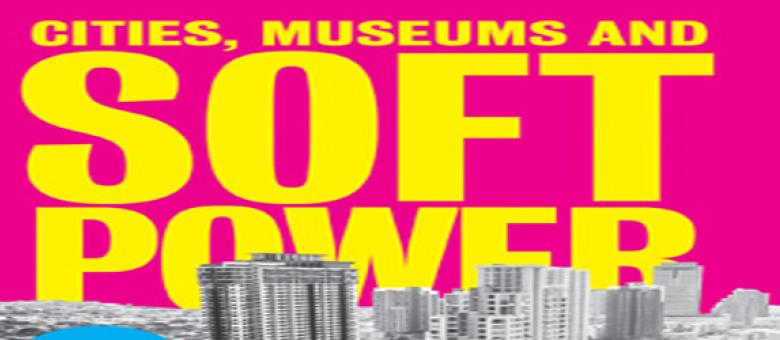
Publikationen

Cities, Museums and Soft Power
by Gail Lord and Ngaire Blankenberg
In Cities, Museums and Soft Power, respected museum planners Gail Lord and Ngaire Blankenberg demonstrate why and how museums and cities are using their soft power to address some of the most important issues of our time. Soft power is the exercise of influence through attraction, persuasion and agenda-setting rather than military or economic coercion. Fourteen of the world’s leading museum and cultural experts explore examples from six continents of the many facets of soft power in museums: how they amplify civic discourse, accelerate cultural change, and contribute to contextual intelligence among the great diversity of city dwellers, visitors and policy-makers. The authors urge city governments to embrace museums which so often are the signifiers of their cities , increasing real estate values while attracting investment, tourists and creative workers.
Blankenberg and Lord describe 32 practical strategies for museums and cities to activate soft power. This book is for museum professionals and trustees who seek to create relevant institutions, and for urbanists and city planners who want thriving and sustainable cities into the future.
Contributors and Their Essays
The book features a preface by Richard Florida and essays from the following contributors:
Ngaire Blankenberg and Gail Lord start by explaining the book’s thesis in Why Cities, Museums and Soft Power and finish with some practical tips: 32 Ways for Museums to Activate their Soft Power.
Guido Guerzoni writes about The Museum Building Boom world-wide.
Frederica Olivares writes about Museums in Public Diplomacy with special reference to the Year of Italian Culture in the US.
Baillie Card looks at Museums in the Knowledge Economy and Urban Development with reference to London’s Knowledge Quarter.
Gegê Leme Joseph explores the successes and challenges of Museums in the Age of Brazilian Soft Power in Rio de Janeiro, Sao Paulo, and Minas Gerais.
Hayfa Matar writes about Museums as Signifiers in the Gulf - with special reference to Bahrain, Kuwait, Dubai, and Doha.
Ngaire Blankenberg, in her essay When Soft Powers Collide, looks at the importance of transparency, multiple perspectives and local engagement in the deployment of soft power and references museums in New York, Port Elizabeth, London, and Abu Dhabi.
Batul Mehta, in her essay Unearthing the Genius Loci of Museums in the Indian Subcontinent explores Indian museums confronting their colonial legacies in Delhi, Baroda, Dhaka and Patna.
Robert Punkenhofer in his essay about Cultural Nomads: Creative People on the Road and travels from Graz to Mexico City to Barcelona to Vienna to New York.
An Laishun, in his essay Cranking Up the Soft Power Engine of Chinese Museums looks at the massive expansion of museums in China and draws on examples in Suzhou, Ningbo and Shangha.
Gail Dexter Lord and Joy Bailey look at how museums have influenced the positioning of the cities of Winnipeg and Atlanta in their essay A Tale of Two Civil and Human Rights Cities.
Mohammed Gamal Rashed’s Cairo and The Grand Egyptian Museum: From Multiculturalism to Leadership in Sustainable Development explores the new museums and approach to museology in Cairo.
Lourdes Fernández draws on her experiences as director of Alhondiga Bilbao, and looks at a new paradigm for creativity in the city- referencing Basel, Miami, Maastricht and Bilbao in Global and Local: Fairs and Biennials, Temporary Urbanism and Pop-Up Museums.
Javier Jimenez explores the Economics of Museums and Cities worldwide.
Taschenbuch: 270 Seiten
Verlag: American Association of Museums (15. Juni 2015)
Sprache: Englisch
ISBN-10: 194196303X
ISBN-13: 978-1941963036





